One objective in starting a record of PNW losses was to “ground truce” the BeeInformed loss surveys. Both BIP and PNW surveys include the same general population of beekeepers (mainly commercial for colony numbers and hobbyists for individual numbers) and annual average loss percentages are computed the same way.
In 1/2 of the states/years the numbers are in close agreement (under 5% difference) but curiously the most recent survey year results exhibits a considerable difference in average loss levels (8.5% or above). The BeeInformed average loss results for 2017-18 winter losses are 8 plus percentage points higher (for Washington) or lower (for Oregon and Idaho) than the PNW survey results. The table on next page includes the summary numbers of % loss, number beekeeper respondents, number colonies they maintained in the fall of the year and, in red, the difference in winter loss average between the two surveys.
For the most recent BIP survey, 122 survey-returning OR beekeepers, with 19,232 colonies had an average loss of 24.8%. In the PNW survey, 319 OR beekeepers, managing 45,524 colonies had an average 15.9% overwinter loss. The loss difference is 8.6%. The BIP survey with a smaller number of beekeeper respondents and colonies managed reported higher estimated loss. In Idaho, the difference was a 8.9% reported loss difference. BIP survey of 34 individuals (managing 11,099 colonies) reported a 25.9% loss while PNW survey, of 21 individuals managing 52,010 colonies had a loss of 17%. As in Oregon, the PNW survey reported the lower loss level.
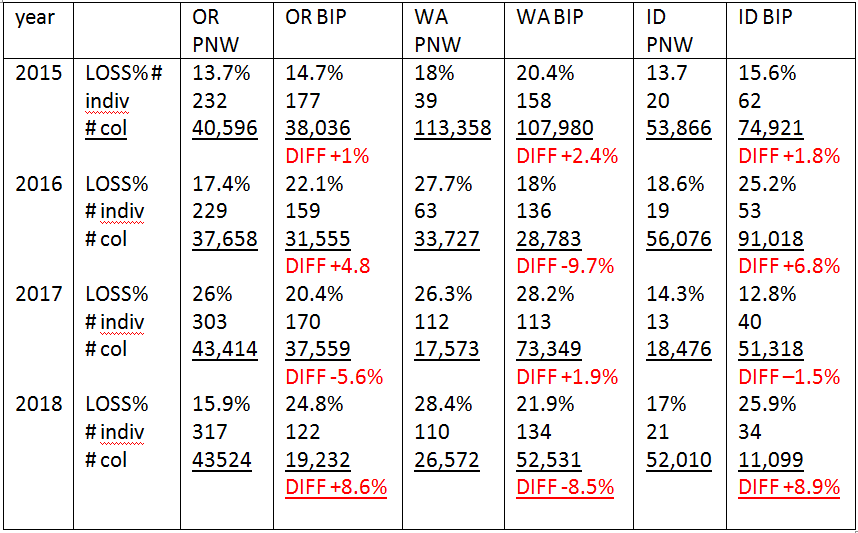
BeeInformed and PNW survey results also differed by the same approximate margin for Washington beekeepers this past survey season but the PNW survey reported the heaviest loss rate. BIP winter loss rate was 21.4% (139 beekeepers managing 52,531 colonies) while PNW survey average loss rate was 28.4%; it included 24 fewer beekeepers managing 25,959 fewer colonies.
The lower reported losses in Oregon and Idaho might be due perhaps to the PNW sample including a higher proportion of commercial/semi-commercial beekeepers with fewer in Commercials represented in Washington PNW returns. Commercial beekeepers in all 3 states typically have lower loses, by 50% or more, compared to smaller-scale beekeepers. In Oregon and Idaho the colony numbers of respondents are greater while the reverse is true for Washington individuals and this too could have impacted the loss percentages.
In three previous survey years, a large differential in average overwinter losses of the two surveys also was reported when there was a big difference in number of individuals or/or number of colonies managed by survey respondents. For example in the previous year (2015-16) survey) in Oregon, the BIP survey reported 5.6% lower loss level (the BIP respondent pool was 133 fewer individuals and 5855 fewer colonies). For Washington, there was a 9.7% difference in the two surveys in 2015-16 when the BIP survey, although including 73 more beekeepers, had 4944 fewer colonies. In the same year, Idaho loss differential of 6.8%; The BIP survey included 34 more beekeepers managing 3,942 more colonies.
Why the most recent survey year differences are so different is not known. Generally the loss level numbers reported by the two surveys do “track” and if sample sizes are considered can be explained when the differences are over 5 percentage points.
Dewey M. Caron 7/9/18
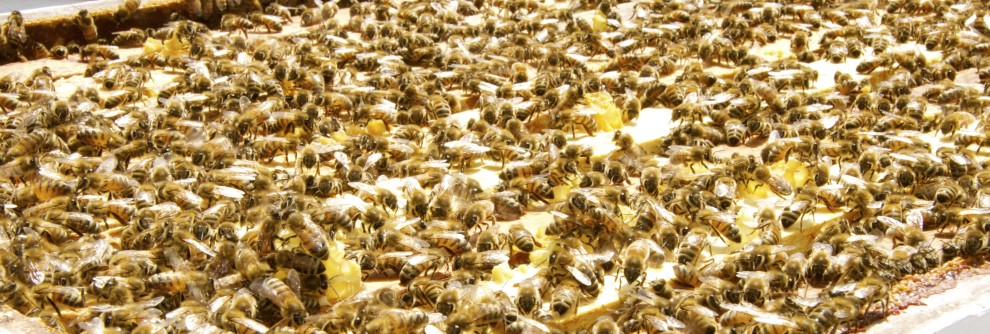
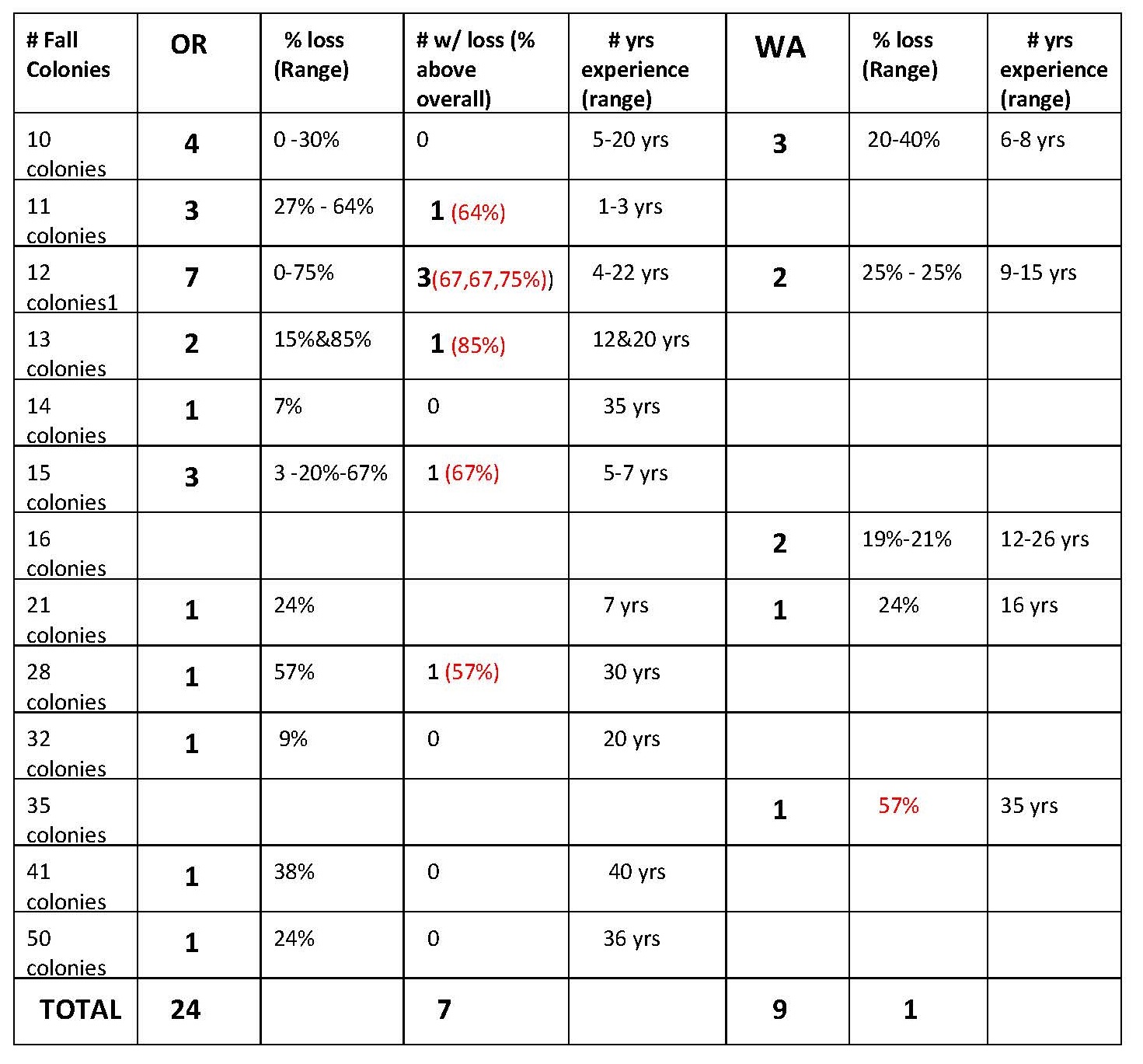
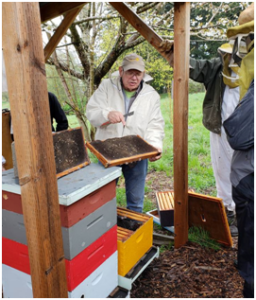 About a dozen brave individuals gathered at the Zenger apiary colonies Sunday April 15th, during a steady Oregon liquid “sunshine” rain for dead colony forensics with Dewey. Photo right by Mandy Shaw.
About a dozen brave individuals gathered at the Zenger apiary colonies Sunday April 15th, during a steady Oregon liquid “sunshine” rain for dead colony forensics with Dewey. Photo right by Mandy Shaw.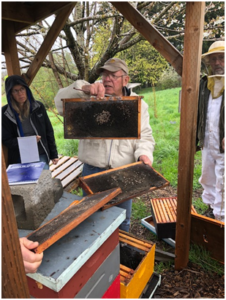 The first dead-out we looked at (photo above) proved to be a tough diagnosis.
The first dead-out we looked at (photo above) proved to be a tough diagnosis.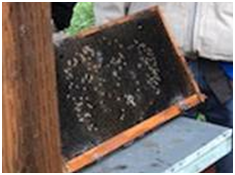 Photo of the three frames with brood shows the frame with a patch of compact brood (held in my right hand) and two frames with very scattered brood (one in my left hand and the third on top of adjacent hive; this frame is shown isolated in photo right). Full super on ground. Photos by Deb Caron.
Photo of the three frames with brood shows the frame with a patch of compact brood (held in my right hand) and two frames with very scattered brood (one in my left hand and the third on top of adjacent hive; this frame is shown isolated in photo right). Full super on ground. Photos by Deb Caron.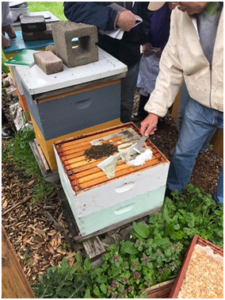 The second dead-out was a more standard necropsy. Hive was a spring split,that struggled all season. It had 2 shallows. Colony had a 19 mite count (6%+) in September and was treated with 2 formic pads between the two boxes. It was alive in March (this spring) but noted as small. It was fed dry sugar on paper (some still remaining) and provided with a frame of sugar candy.
The second dead-out was a more standard necropsy. Hive was a spring split,that struggled all season. It had 2 shallows. Colony had a 19 mite count (6%+) in September and was treated with 2 formic pads between the two boxes. It was alive in March (this spring) but noted as small. It was fed dry sugar on paper (some still remaining) and provided with a frame of sugar candy.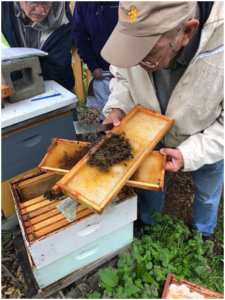 All frames, except one with high number of drone cells, could be reused for anew colony installation (package, swarm, split). Brush off dead cluster and from bottom board. If inclined wash mold with bleach or vinegar solution.
All frames, except one with high number of drone cells, could be reused for anew colony installation (package, swarm, split). Brush off dead cluster and from bottom board. If inclined wash mold with bleach or vinegar solution.